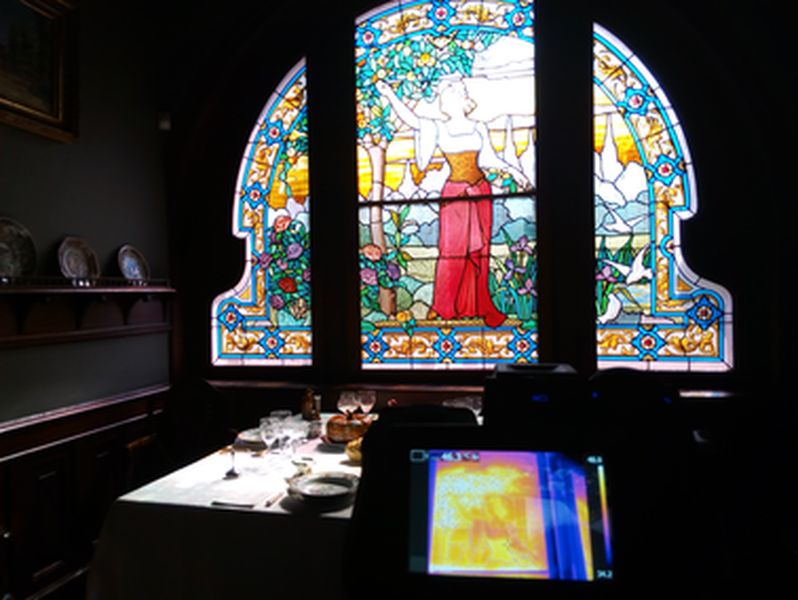User Group Leader: Teresa Palomar
http://www.patrimoniocultural.gov.pt/pt/museus-e-monumentos/rede-portuguesa/m/casa-museu-dr-anastacio-goncalves/
Venue: Casa-Museu Dr. Anastácio Gonçalves, Lisbon (Portugal)
The Casa-Museu Dr. Anastácio Gonçalves (CMAG) has two glass windows in Art Nouveau style signed by the Societé Artistique de Peinture sur Verre in 1904. One of them is a stained-glass window located on the first floor in the current Dining room, and the other one is a panel pained with enamels located in the Atelier on the second floor. This latter panel presents a very poor state of conservation with loss of the bluish and purplish enamels. Historical photographs showed that the Atelier panel was placed inside out until the nineties. Unconventional colors were also observed in the lower part of this panel, which can be related with probable retouchings. In addition, protective glasses were installed on the outside of the Atelier and Dining room panels with a gap of ~5 cm and ~20 cm, respectively.
Both stained glass windows have been stylistically studied, however, no scientific study has been carried out. In the framework of a collaboration between VICARTE, FCT-UNL, and CMAG, these stained glass windows are being studied with the objective to assess their condition.
Four teams from MOLAB came in June, coinciding with the summer solstice, and in September 2017.
Thermography (MOLAB France: CRC – team LRMH) was applied to identify the thermal variations on the window panels induced by sun heating during the summer solstice (maximum exposure to sunlight).
The analysis was carried out during the heating by sunlight and the cooling of the window panels in transmission mode from inside of the building. In the Dining room panel, the temperature variation of each glass depended on their color; in addition, it was observed a very high increase of temperature in the room due to the sun impact, which can affect all the objects in the room such as glassware, tableware, carpets, wood tables, paintings, ceramic, and other decoration items. In the Atelier panel, the temperature of the painted areas increased more than the glass support itself, and it was observed a bad air ventilation between the historical panel and the protective glass which induced the accumulation of
hot air in the upper part of the panel.
Digital Holographic Speckle Pattern Interferometry (MOLAB Greece: FORTH) was applied to assess the stability of the surface layers, such as enamels and grisailles. Namely to detect possible deformations, deteriorations, or fractures. During the analyses, it was observed that each glass vibrate independently possibly due to the lead cames mounting. Regarding the painted areas, they showed changes in the pattern which could be related with fissures and/or detachments.
Vis Hyperspectral Imaging (MOLAB Italy: UNIPG S.M.A.Art) was applied to characterize the enamels and paints in the Atelier panel, and the chromophores of the glasses in the Dining room window. In the Atelier Panel, blue and green are Co-based pigments, yellow was obtained with nanoparticles of silver and red is copper-ruby enamel. In the Dining room panel, blue is due to Co2+ ions, and at least three type of greens were identified: Cr3+Co2+ and Fe2+.
Optical Coherence Tomography (MOLAB Poland: NCU) was carried out to determine the thickness of enamels and grisailles, their adherence to the glass support (fissures, cracks, and flaking), and the presence of retouching layers over the original enamels. Thick layers, which could be related with retouchings, were located on the surface of the glasses in the Atelier panel. In the Dining room panel, some problems of conservation of thick grisailles were observed.

